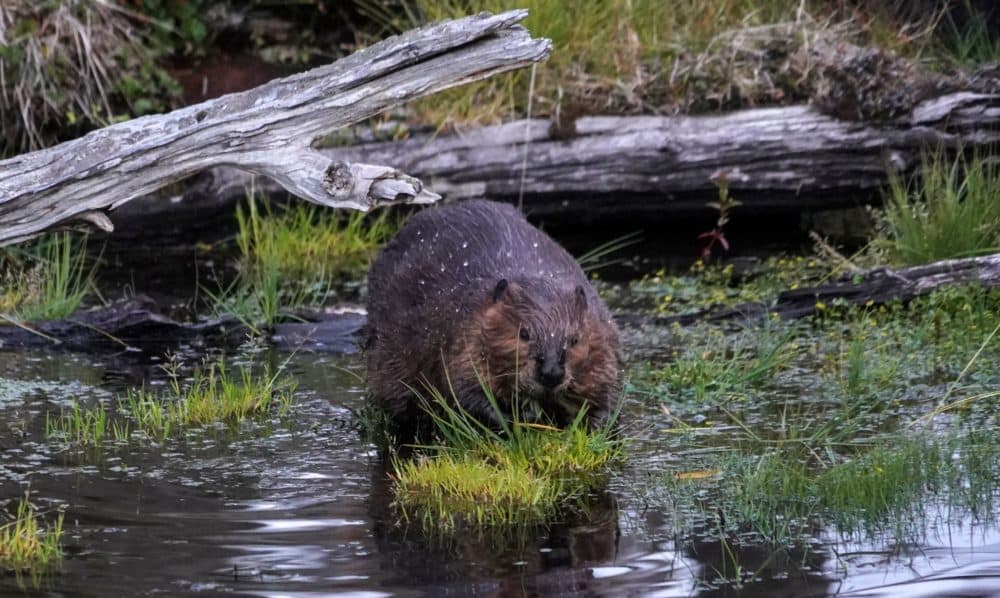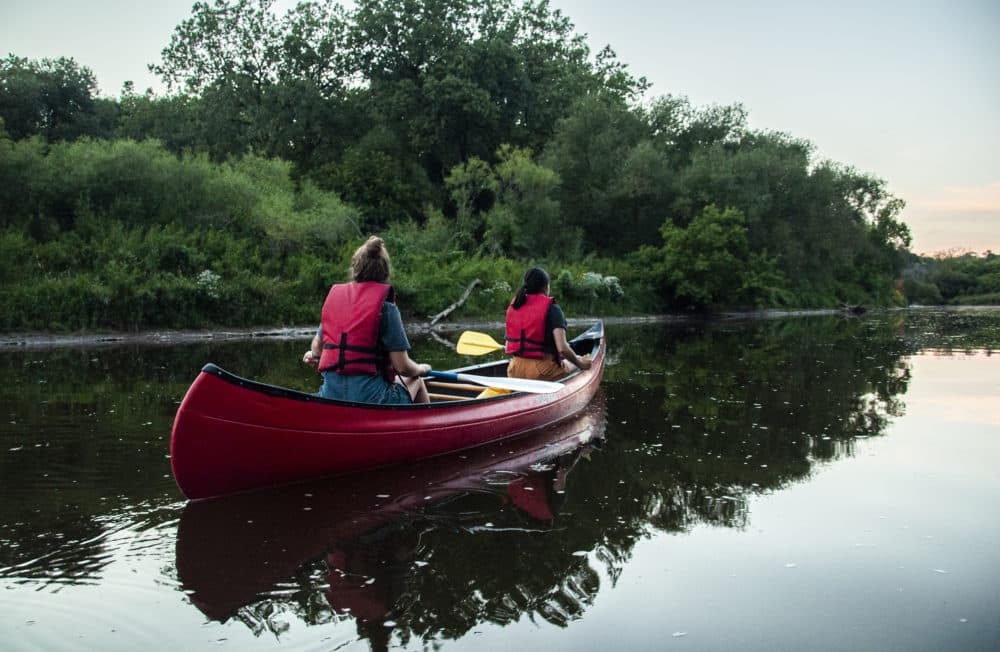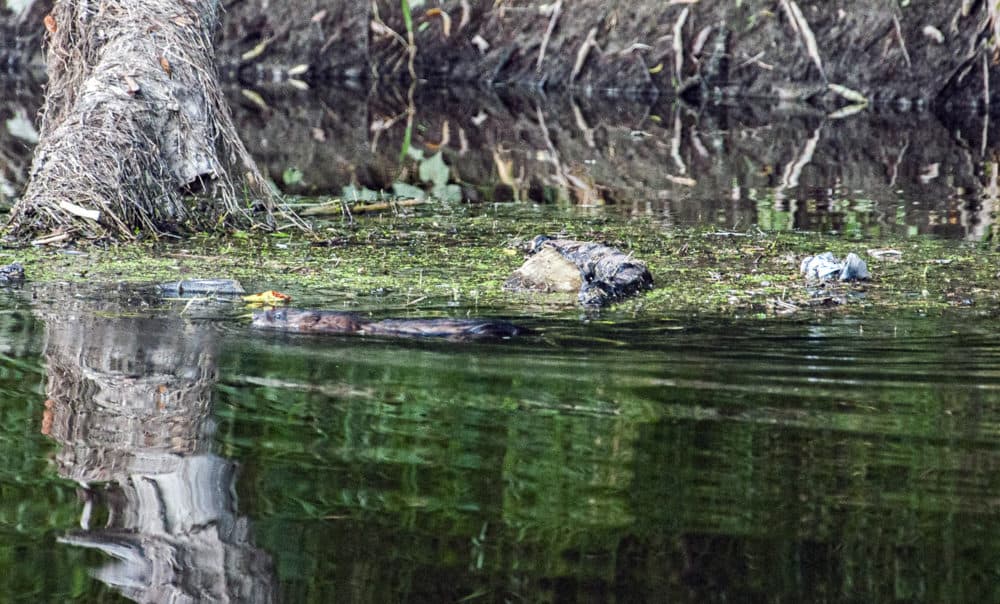Advertisement
Milwaukee welcomes back beavers, after hunting and pollution drove the industrious rodents away
Resume
Beavers are moving back into Milwaukee.
The American beaver was once a fixture of this area, at the confluence of three rivers by the shores of Lake Michigan. Then the region's first European residents made Milwaukee one of their main fur trading posts. They hunted and trapped beavers for their pelts, and the population plummeted.
As Milwaukee developed, people turned marshes into industrial land and pumped pollution into the rivers. Soon, North America's largest rodent was all but evicted from the city.
But a few years ago, people started noticing trees along the riverbanks in the heart of downtown Milwaukee that had been gnawed down to a point — a telltale sign of a beaver.
Researchers have been spotting beavers in Riverside Park a few miles north of downtown for a few years. It's a convenient place to learn about the animals, too, because it's also home to the Urban Ecology Center.
Tim Vargo is the center’s manager of research and community science. I asked him when the best time to spot a beaver might be, and he suggested we take a canoe ride down the Milwaukee River just before sunset. So one evening in September, we haul a couple of canoes down to the river and set off in search of beavers.

Before we even push away from the shore, we see another small mammal. A mink scurries up a tree near where we had just launched our canoes.
Ecologists say the return of wildlife is a sign that ecosystems are recovering. It's also a sign that, like people in Milwaukee, beavers are learning to love their local rivers again.
Vargo says the return of animals like minks and beavers to this stretch of the river parallels the city's own attitude toward its waterways.
“Where we're paddling right now, there were swimming schools up and down this river. There were amusement parks, ski jumps in the wintertime. There was a lot of ice skating, and there was something called canoe jousting, where people would stand in canoes and push them together and you'd have like a big Q-Tip kind of thing,” he says. “As you went by the other canoe you’d try to push them into the river.”
It’s not hard to imagine why canoe jousting might have fallen out of fashion. But what happened to all the other recreational uses for the river?
“It didn't take long for the pollution to catch up,” Vargo says. “You kind of had people moving away from the river to the lake. So you had this period of loving the river to a period of completely destroying it. And then probably in the last 20 years, which coincides with the return of some great wildlife, you had people investing in it and loving it again and trails up and down the river.”
There was even a swimming race in the river, something unheard of until just a few years ago. “The Cream City Classic is an opportunity to celebrate progress made in water quality and welcome our entire Milwaukee community back to the water as we all lift our expectations of what our waters can be,” reads the race’s website.
On our canoe ride we spot a few fish, some sandpipers and downy woodpeckers before one of Vargo’s colleagues spots something furry swimming along the shoreline near a burrow in the muddy riverbank. Maggie Steinhauer, research and community science coordinator for the Urban Ecology Center, points it out.
“There’s something swimming over that under those hanging plants," she says as we stealthily paddle closer.
The animal swims over by a floating patch of garbage and driftwood, but just as we get close enough to get a good look, it dives under water. Beavers can hold their breaths for up to 15 minutes. We wait around but don't see it again.

Today, there are an estimated 10 to 15 million beavers in the U.S. But there were once perhaps hundreds of millions. Vargo says their dams transformed the landscape.
“The amount of engineering they did on our planet is ridiculous,” Vargo says. By changing the flow of water, he says, beaver dams can help wetlands filter out pollutants. Some ecologists think beavers could be the key to restoring habitat in the American West, too.
“It's estimated that they're just doing a lot of environmental cleanup, a lot of services that we spend a lot of money on,” Vargo says.
That's another reason ecologists are happy to see beavers returning to urban areas.
Last year, researchers at the University of Wisconsin Milwaukee found beavers could substantially reduce flooding in some of the county's most flood-prone areas.
Trout fisherman, however, worry too many beaver dams could muck up their fishing streams.
But in urban Milwaukee, there's still room for people to share the rivers with a few more beavers.
The sun eventually set on our canoe ride and we got back on shore while bats snapped up bugs over our heads.
But was that really a beaver we saw earlier? I never got a glimpse of that scaly, paddlelike tale. Could it have been a muskrat? I had a camera on the canoe, and later I sent my photos to Christopher Yahnke, a biologist at the University of Wisconsin Stevens Point. He emailed right back.
"Muskrats swim lower," he said. "Those cute ears and huge head – definitely a beaver."
